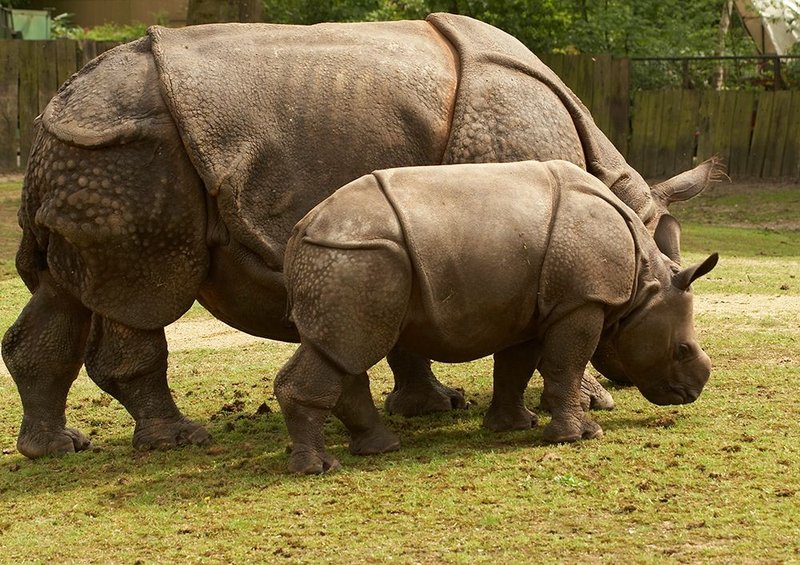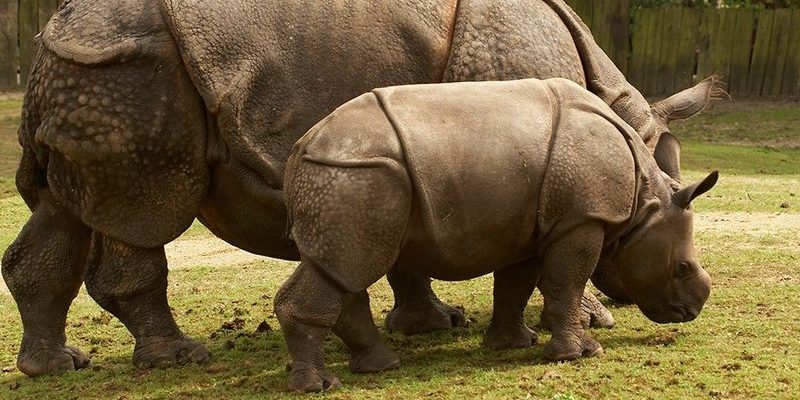
These majestic animals are not just fascinating because of their rarity; they also have complex social structures and behaviors, especially when it comes to nurturing their calves. Imagine a single mother, fiercely protective yet tender, teaching her child how to survive in a world full of challenges. That’s a snapshot of the life of a Javan rhino mother and her young. In this article, we’ll dive deep into the details of how these incredible creatures care for their calves, from birth to independence.
Understanding Javan Rhinoceros Calves
A Javan rhino calf is born after a gestation period of about 16 months, which is pretty lengthy! When the calf finally arrives, it typically weighs around 25 to 30 kilograms (55 to 66 pounds). Here’s the thing: being born into a world where only an estimated 70 Javan rhinos remain is a tough start. These calves are not just cute; they are the future of their species, and their early experiences are crucial for their survival.
When a calf is born, it stays close to its mother for protection. The mother greets her newborn with gentle nudges, encouraging it to stand and suckle within minutes of birth. Honestly, witnessing this moment is like watching a heartwarming scene in a nature documentary. The bond formed between the mother and calf is essential—it’s not just love; it’s about survival in a challenging ecosystem.
Despite the dangers lurking in their habitat, including poaching and a loss of natural habitat, the mother rhino strives to provide a safe environment. She will often choose secluded areas to give birth and raise her young, ensuring minimal risks from predators or human intrusion.
The Role of Mothers in Parenting
Mothering in the animal kingdom can be quite varied, but for Javan rhinos, the mother is the primary caregiver. Once the calf is born, the mother will stay with it almost constantly. This close-knit relationship is vital as the mother teaches her calf important survival skills. You might be wondering, what exactly does this teaching look like?
Firstly, the mother introduces her calf to their surroundings. This includes showing the best places to find food, water, and shelter. Javan rhinos are herbivores, primarily feeding on grasses, leaves, and fruit. During these explorations, the mother rhino keeps a watchful eye, ensuring her calf learns without becoming vulnerable to dangers.
One fascinating aspect of this relationship is the mother’s patience. If the calf is too timid or unsure, the mother will wait, gently encouraging it to approach new experiences. This nurturing behavior helps build the calf’s confidence—essential for its future independence.
Social Behavior and Learning from Others
You might find it interesting that Javan rhinos are relatively solitary animals. However, they do have moments of social interaction, especially between mothers and their young. While these rhinos don’t form tight-knit family groups like elephants, sometimes, females with calves can be observed together in shared spaces.
These social interactions can be beneficial for young rhinos. By observing other mothers and their calves, the young Javan rhinos learn through imitation. They watch how the mothers communicate and react to different situations. This behavioral learning complements their mother’s teachings and enhances their survival skills.
Additionally, these social experiences can help them develop social bonds. As they grow, calves will occasionally engage in play with one another. This play is not only fun but also teaches important physical skills they will need later in life.
Feeding Practices and Diet Development
Feeding practices are a vital part of raising a rhino calf. Initially, the calf consumes its mother’s milk. This milk is rich in nutrients, providing the essential building blocks for healthy growth. As the calf grows, its diet gradually shifts from milk to solid food.
Mothers play a crucial role in this transition. Around six months of age, calves start to nibble on vegetation alongside nursing. The mother rhino leads the way, showing her calf what to eat. She’ll often take the lead to areas with abundant food, allowing her young one to learn the best grazing spots.
As calves mature, they begin to eat independently, but the foundation laid by their mothers is crucial. The right diet is essential for developing strong bones and muscles—important for their future as adult rhinos.
The Importance of Protection and Survival Skills
Living in the wild poses threats from various sources. Poaching and habitat loss are significant concerns for Javan rhinos. Mothers instinctively understand the importance of teaching their calves how to avoid these dangers.
Protection starts with awareness. A mother rhino is always alert, listening and watching for any signs of danger. When threats are perceived, she takes immediate action to protect her young. This protective instinct is evident—she may use her powerful size to shield her calf or lead it to safer areas.
Moreover, the mother teaches her calf to recognize potential dangers, such as loud noises or unusual scents. From a young age, the calf learns to stay close and listen to its mother’s cues. This early education in survival tactics is what enables young rhinos to grow into independent adults ready to face the challenges of their environment.
Preparing for Independence
As calves approach their second birthday, they begin to prepare for independence. The bond between a mother and her calf remains strong during their early years, but eventually, the mother will encourage her young to venture out on its own. You might be wondering, how does this process happen?
During this period, the mother gradually reduces dependency. She encourages her calf to forage alone and spend more time away from her. This gradual transition is crucial for the young rhino, helping it build confidence and skills needed for survival without constant support.
Though they are weaned by 2 to 3 years old, many young Javan rhinos may stay close to their mothers for several years afterward. This unique approach allows the young ones to learn while still having the safety net of their mother’s presence.
Raising young Javan rhinoceroses is a remarkable journey of nurturing and protection. From the moment they are born, calves are guided by their mothers, who play an essential role in teaching them how to survive in the wild. The bond between them is akin to a delicate dance—filled with love, teaching, and preparation for the inevitable challenges ahead.
As we reflect on this fascinating process, it’s clear that every moment in a Javan rhino’s early life matters. Understanding how they raise their young helps us appreciate the complexities of their world and the importance of conservation efforts. Protecting these remarkable creatures not only preserves their future but also ensures that we continue to witness the incredible journey of Javan rhinoceroses and their young in the wild.

